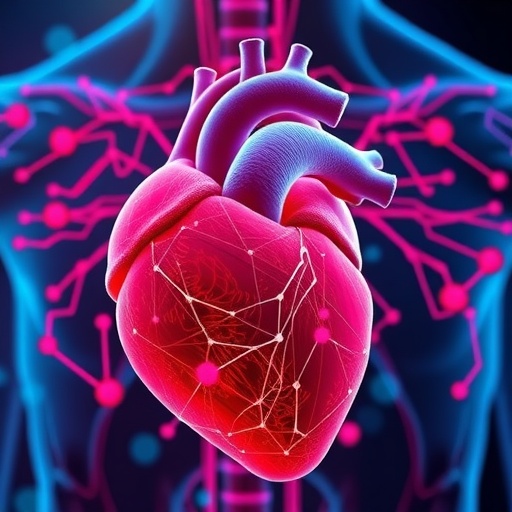PITTSBURGH, June 7, 2019 – The faster fluid is removed using continuous dialysis from patients with failing kidneys, the higher the likelihood they will die in the next several months, according to a study published today in JAMA Network Open by University of Pittsburgh School of Medicine researchers.
Nearly two-thirds of critically ill patients with acute kidney injury have extra fluid accumulating in their bodies, which can put pressure on their lungs and cause injury to other organs. To relieve that pressure, clinicians routinely remove the excess fluid from the blood while performing dialysis in the intensive care unit. But there is no guidance on how fast that fluid should be removed.
“We want to get this excess fluid out of our patients before it causes damage but, in removing it, we’re actually causing a controlled loss of fluid that can sometimes cause stress on the heart and lead to dangerously low blood pressure,” said lead author Raghavan Murugan, M.D., M.S., associate professor in Pitt’s Department of Critical Care Medicine and UPMC physician. “So the question–how rapidly to remove fluid?–has been asked in the critical care community for many years, but there’s been no good answer.”
Previous studies in outpatients who are not critically ill found that routine dialysis–a procedure to remove waste, toxins, salt and extra water from the blood of people whose kidneys have failed–when performed too quickly, is associated with increased risk of death.
Murugan partnered with senior author Rinaldo Bellomo, M.D., Ph.D., a professor of intensive care medicine at the University of Melbourne in Australia to find out if that finding extends to critically ill patients. Their team examined data from 1,434 patients that Bellomo had previously collected for the Randomized Evaluation of Normal vs. Augmented Level of Renal Replacement Therapy trial, which was conducted between December 30, 2005 and November 28, 2008 in 35 intensive care units in Australia and New Zealand.
The research team found that for every 0.5 milliliter increase in fluid removed per kilogram of the patient’s weight per hour (0.5 mL/kg/hr), their risk of death increases. That translates to a 51% to 66% higher risk of death in the next three months for critically ill patients for whom excess fluid is removed at a rate greater than 1.75 mL/kg/hr, compared to patients for whom excess fluid is removed at a rate less than 1.01 mL/kg/hr.
For the average older American male, that’s a difference of removing a gallon of fluid in about one day versus a little under two days.
Murugan is quick to point out that his analysis shows association, not causation; until a clinical trial is performed to specifically test the effects of removing fluid faster versus slower, he cannot say for sure that removing fluid slowly is better for the patient. And, in some cases, such as imminent heart failure, Murugan says a more rapid removal of fluid might be warranted to prevent sudden death.
“You have to balance the pros and the cons, and decide how fast to remove fluid based on your patient’s clinical condition,” said Murugan, who also is a member of Pitt’s Clinical Research, Investigation, and Systems Modeling of Acute Illness Center and the Center for Critical Care Nephrology. “But in a patient where I can’t find an immediate need to get fluid out quickly, I’ll be removing fluid at a slower rate until we get definitive results and guidance from a clinical trial.”
###
Co-authors on this research are Samantha J. Kerti, M.S., Chung-Chou H. Chang, Ph.D., Gilles Clermont, M.D., M.Sc., and John A. Kellum, M.D., M.C.C.M., all of Pitt; Martin Gallagher, M.D., Ph.D., of The George Institute for Global Health and University of Sydney, in Australia; and Paul M. Palevsky, M.D., of Pitt and the VA Pittsburgh Healthcare System.
This research did not receive outside funding.
To read this release online or share it, visit http://www.
About the University of Pittsburgh School of Medicine
As one of the nation’s leading academic centers for biomedical research, the University of Pittsburgh School of Medicine integrates advanced technology with basic science across a broad range of disciplines in a continuous quest to harness the power of new knowledge and improve the human condition. Driven mainly by the School of Medicine and its affiliates, Pitt has ranked among the top 10 recipients of funding from the National Institutes of Health since 1998. In rankings recently released by the National Science Foundation, Pitt ranked fifth among all American universities in total federal science and engineering research and development support.
Likewise, the School of Medicine is equally committed to advancing the quality and strength of its medical and graduate education programs, for which it is recognized as an innovative leader, and to training highly skilled, compassionate clinicians and creative scientists well-equipped to engage in world-class research. The School of Medicine is the academic partner of UPMC, which has collaborated with the University to raise the standard of medical excellence in Pittsburgh and to position health care as a driving force behind the region’s economy. For more information about the School of Medicine, see http://www.
http://www.
Contact: Allison Hydzik
Office: 412-647-9975
Mobile: 412-559-2431
E-mail: [email protected]
Contact: Rick Pietzak
Office: 412-864-4151
Mobile: 412-523-6922
E-mail: [email protected]
Media Contact
Allison Hydzik
[email protected]
http://dx.




